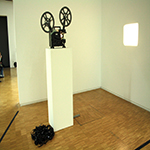Euroacademia Conferences
 Europe Inside-Out: Europe and Europeanness Exposed to Plural Observers (9th Edition) April 24 - 25, 2020
Europe Inside-Out: Europe and Europeanness Exposed to Plural Observers (9th Edition) April 24 - 25, 2020 Identities and Identifications: Politicized Uses of Collective Identities (9th Edition) June 12 - 13, 2020
Identities and Identifications: Politicized Uses of Collective Identities (9th Edition) June 12 - 13, 2020 8th Forum of Critical Studies: Asking Big Questions Again January 24 - 25, 2020
8th Forum of Critical Studies: Asking Big Questions Again January 24 - 25, 2020 Re-Inventing Eastern Europe (7th Edition) December 13 - 14, 2019
Re-Inventing Eastern Europe (7th Edition) December 13 - 14, 2019 The European Union and the Politicization of Europe (8th Edition) October 25 - 26, 2019
The European Union and the Politicization of Europe (8th Edition) October 25 - 26, 2019 Identities and Identifications: Politicized Uses of Collective Identities (8th Edition) June 28 - 29, 2019
Identities and Identifications: Politicized Uses of Collective Identities (8th Edition) June 28 - 29, 2019 The European Union and the Politicization of Europe (7th Edition) January 25 - 26, 2019
The European Union and the Politicization of Europe (7th Edition) January 25 - 26, 2019 7th Forum of Critical Studies: Asking Big Questions Again November 23 - 24, 2018
7th Forum of Critical Studies: Asking Big Questions Again November 23 - 24, 2018 Europe Inside-Out: Europe and Europeanness Exposed to Plural Observers (8th Edition) September 28 - 30, 2018
Europe Inside-Out: Europe and Europeanness Exposed to Plural Observers (8th Edition) September 28 - 30, 2018 Identities and Identifications: Politicized Uses of Collective Identities (7th Edition) June 14 - 15, 2018
Identities and Identifications: Politicized Uses of Collective Identities (7th Edition) June 14 - 15, 2018
Religious Art at the Service of an Atheist State: Cultural Policy and Nationalistic Propaganda in Late Communist Bulgaria
-
-

-
Presentation speakers
- Clemena Antonova, Morphomata International Centre, University of Cologne, Germany
- Download presentation
Abstract:
In this paper, I will look at an aspect of cultural policy and nationalistic propaganda in late Communist Bulgaria. More concretely, I will consider the uses to which religious art was put to in the context of the state-sponsored 1300th anniversary of the foundation of the Bulgarian state (henceforth 1300 Years Bulgaria). I will show that religious monuments were a prominent element in the events associated with the anniversary celebrations, but they were cast in a very specific guise. The religious dimension of the art under my attention was downplayed, while nationalistic interpretations, playing on modern concepts such as “nation”, “artistic genius”, etc., were advanced in order to describe pre-modern art. In other words, according to the view proposed here, 1300 Years Bulgaria, is not an example of a softening line of the Communist state towards religion, as has been frequently suggested. Rather, it is a rather flamboyant illustration of nationalistic propaganda common to late Communism not only in Bulgaria but elsewhere as well. In Part I of my paper, I will outline briefly the Marxist-Leninist position on religion, which was followed in Communist Bulgaria. The question: “what is to be done about religion?” refers to Marxism’s insistence that religion can have no place in a Communist society. Whatever forms cultural policy took throughout the Communist period, the ideological position behind them was quite consistently atheist. In Part II, I look at the ways in which religious art was used by the Bulgarian Communist state in the late 1970s and early 1980s, particularly in the context of 1300 Years Bulgaria. Religious art, in short, became one of the tools of nationalistic propaganda. The question: “what is to be done about the cult object?” highlights the idea that religious art was intentionally dissociated from its religious and cultic connotations and presented, instead, as an instance of “national genius”.
-
Related Presentations


















